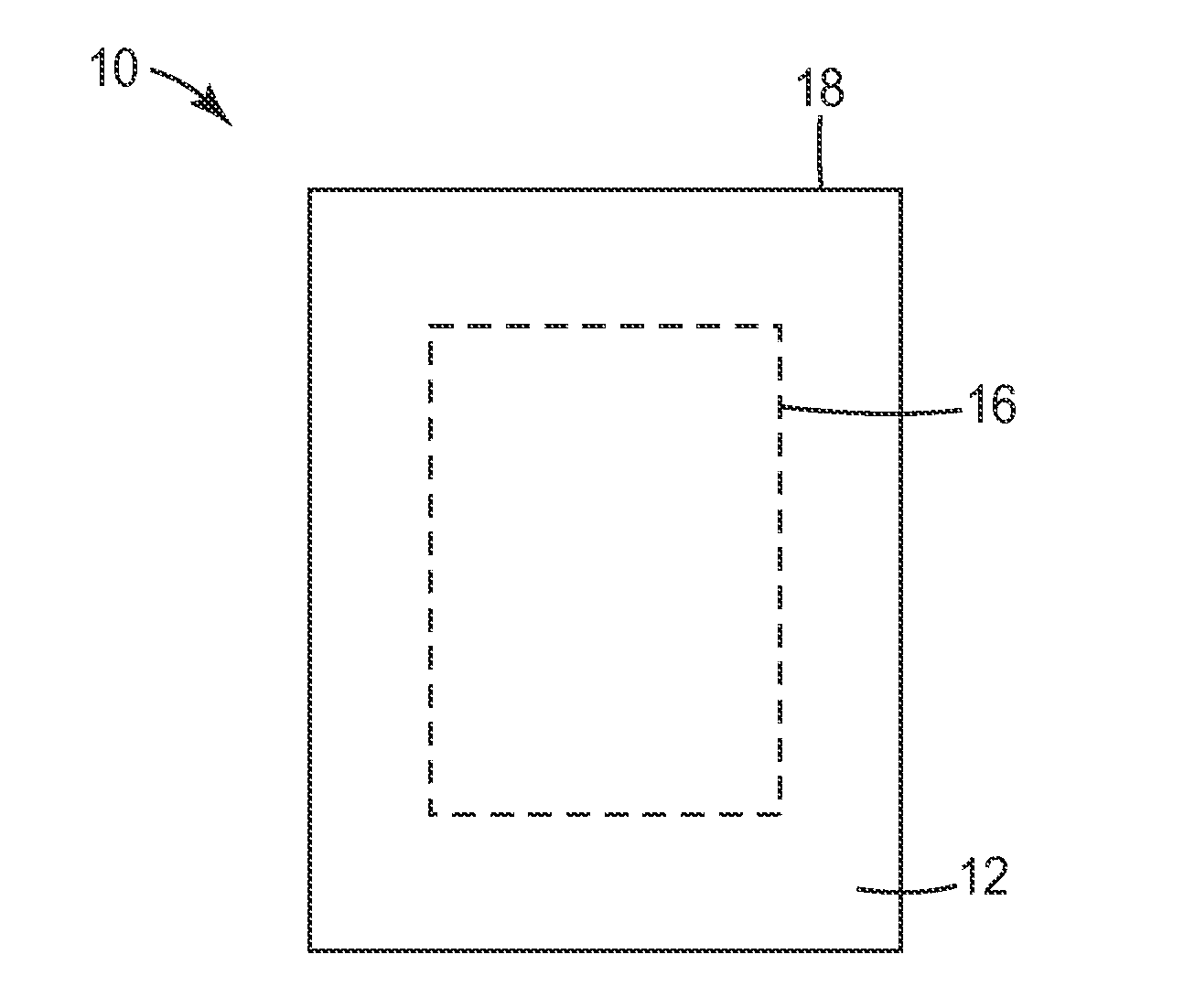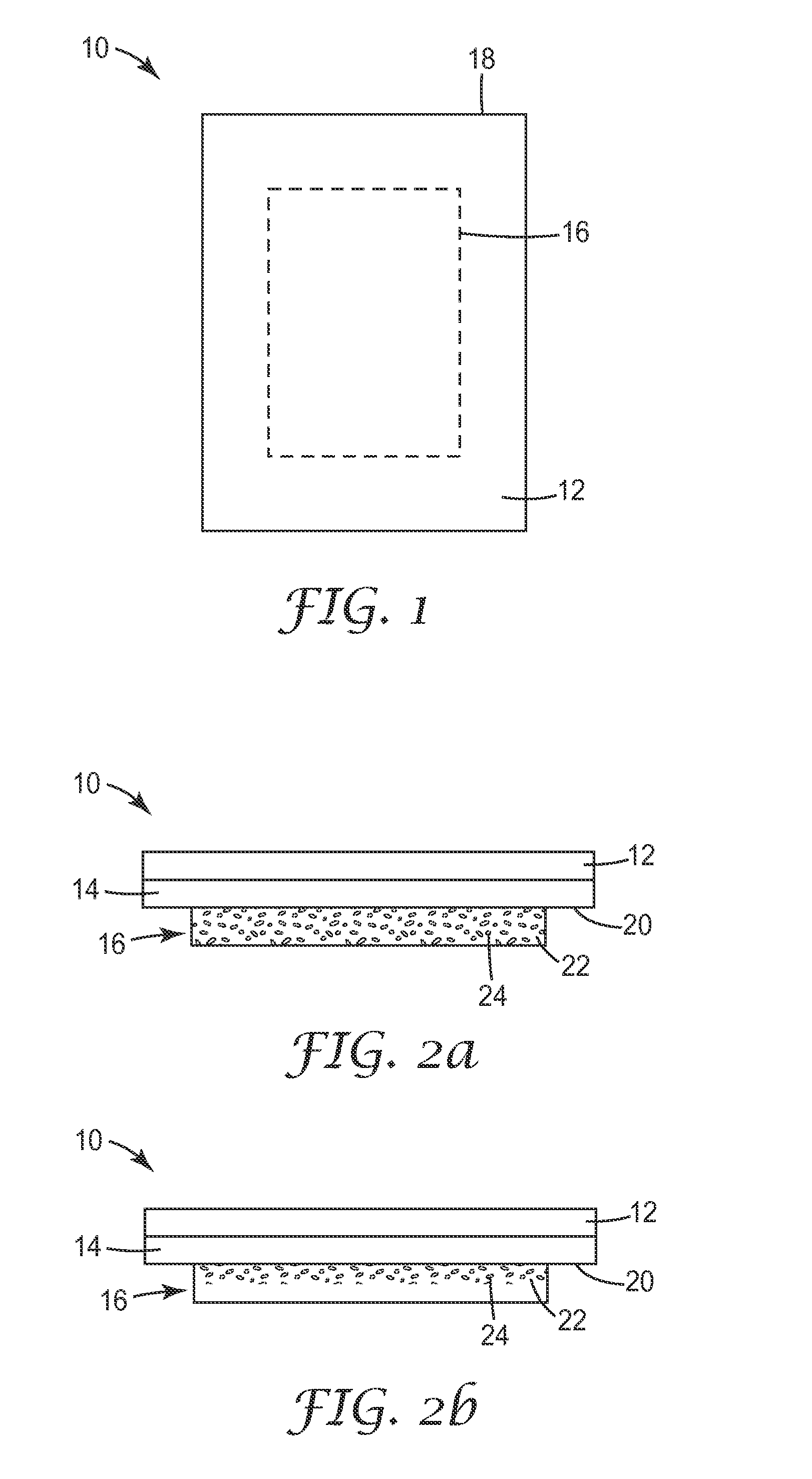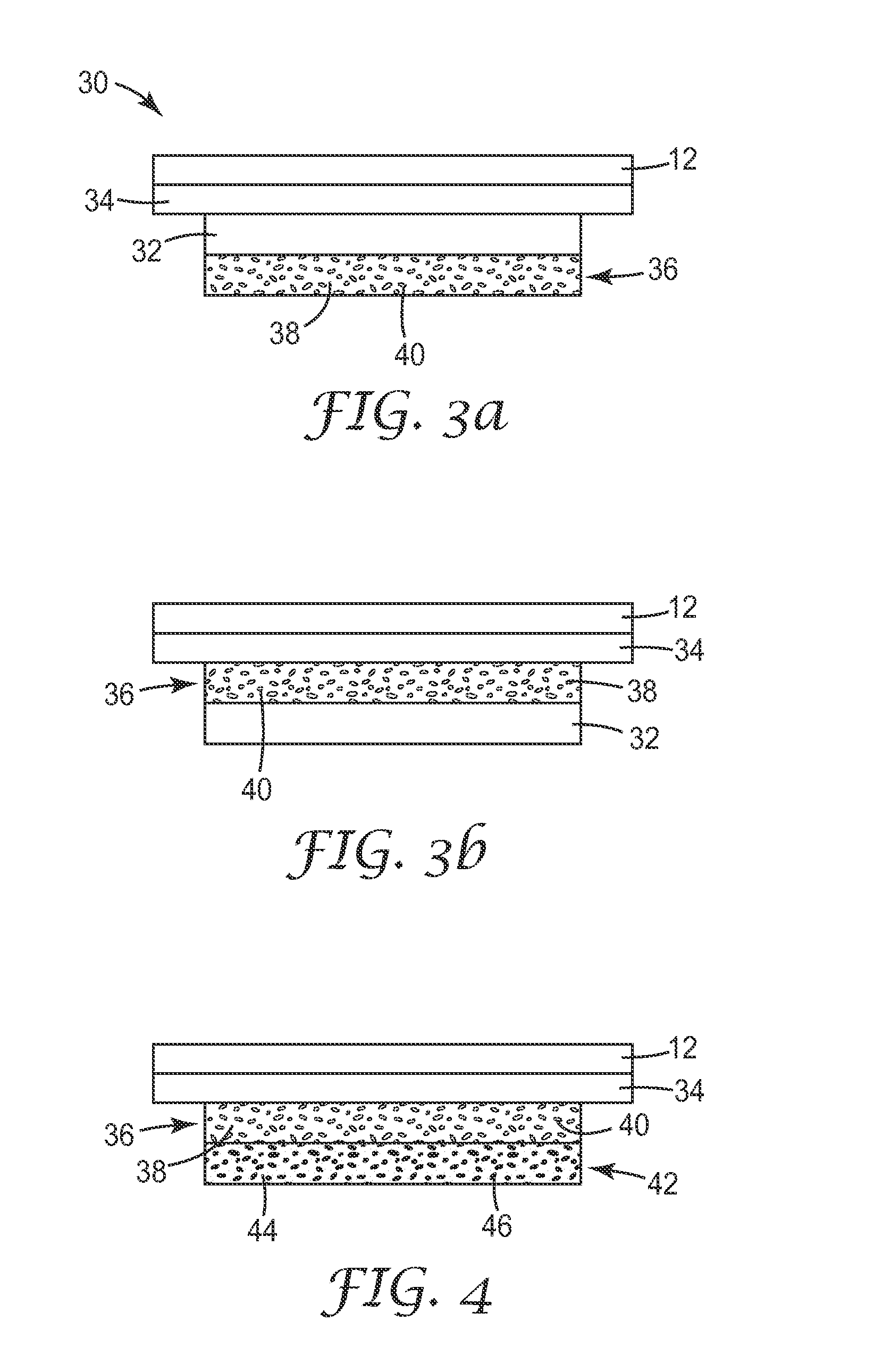Medical articles and methods of making using immiscible material
a technology of immiscible materials and medical articles, applied in the field of medical articles, can solve the problems of high moisture transmission rate, high cost and elaborate methods and equipment used to pattern coat adhesives, and achieve the effects of improving moisture vapor transmission rate (mvtr), high mvtr, and high mvtr
- Summary
- Abstract
- Description
- Claims
- Application Information
AI Technical Summary
Benefits of technology
Problems solved by technology
Method used
Image
Examples
example 4
[0186]The non-woven from Example 1 was saturated with a 0.15 M aqueous solution of sodium hydroxide, and then dried in an oven at 75° C. for 30 minutes prior to lamination to the adhesive side of the dressing. The coating weight of sodium hydroxide on the non-woven was measured at 5 g / m2. This coated non-woven was then laminated by hand to the adhesive side of a 3M TEGADERM 9548HP dressing. Four test specimens from the sample were tested two days after the lamination step for both upright and inverted Moisture Vapor Transmission Rates (MVTR). The average upright MVTR and inverted MVTR values were 1210+ / −50 g / m2 / 24 hours and 11400+ / −1800 g / m2 / 24 hours, respectively.
example 5
[0187]The non-woven from Example 1 was saturated with a 0.30 M aqueous solution of sodium hydroxide, and then dried in an oven at 75° C. for 30 minutes prior to lamination to the adhesive side of the dressing. The coating weight of sodium hydroxide on the non-woven was measured at 7 g / m2. This coated non-woven was then laminated by hand to the adhesive side of a 3M TEGADERM 9548HP dressing. Four test specimens from the sample were tested two days after the lamination step for both upright and inverted Moisture Vapor Transmission Rates (MVTR). The average upright MVTR and inverted MVTR values were 1280+ / −60 g / m2 / 24 hours and 16900+ / −740 g / m2 / 24 hours, respectively.
example 6
[0188]The non-woven from Example 1 was dip coated in a 4.0% (w / w) aqueous solution of sodium carbonate monohydrate at a rate of 13 feet / min (3.96 meter / min) and dried in a pilot scale forced air oven at approximately 105° C. for about 5 minutes. The coating weight of sodium carbonate monohydrate on the non-woven was 16.3 g / m2. This coated non-woven was then laminated by hand to the adhesive side of a 3M TEGADERM 9548HP dressing. For the five specimens tested, the average upright MVTR and inverted MVTR values were 1070+ / −40 g / m2 / 24 hours and 20800+ / −980 g / m2 / 24 hours, respectively.
PUM
| Property | Measurement | Unit |
|---|---|---|
| thick×2 | aaaaa | aaaaa |
| total weight | aaaaa | aaaaa |
| pH | aaaaa | aaaaa |
Abstract
Description
Claims
Application Information
 Login to View More
Login to View More - R&D
- Intellectual Property
- Life Sciences
- Materials
- Tech Scout
- Unparalleled Data Quality
- Higher Quality Content
- 60% Fewer Hallucinations
Browse by: Latest US Patents, China's latest patents, Technical Efficacy Thesaurus, Application Domain, Technology Topic, Popular Technical Reports.
© 2025 PatSnap. All rights reserved.Legal|Privacy policy|Modern Slavery Act Transparency Statement|Sitemap|About US| Contact US: help@patsnap.com



